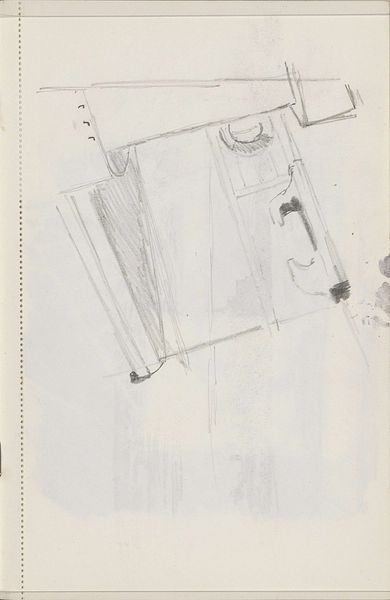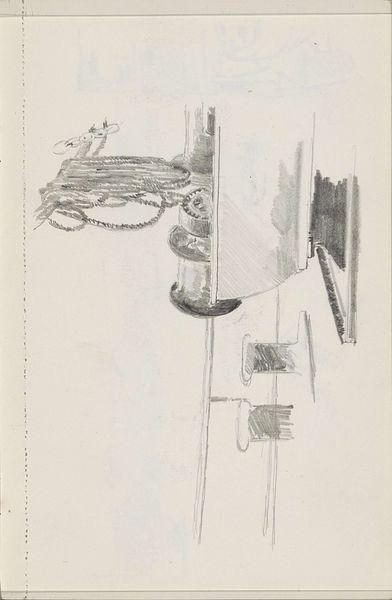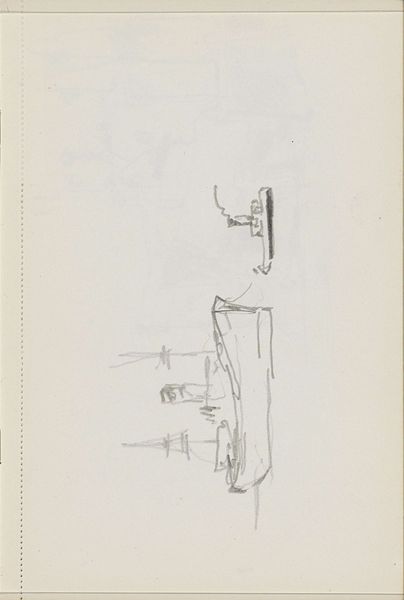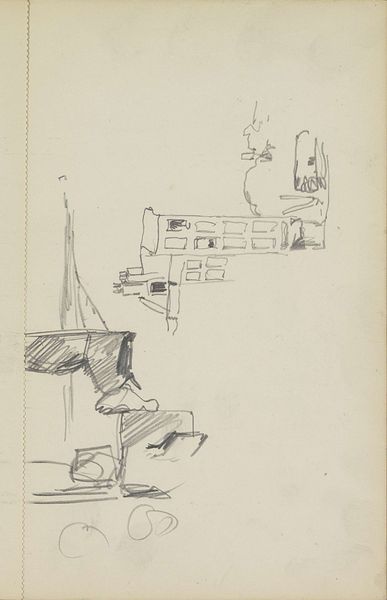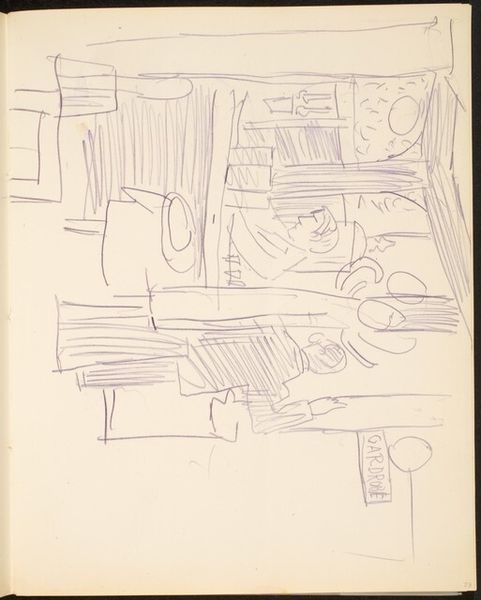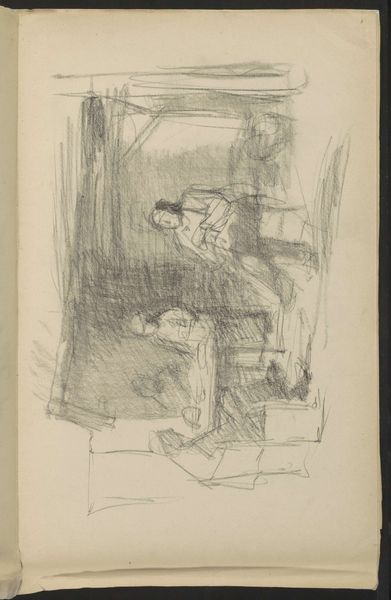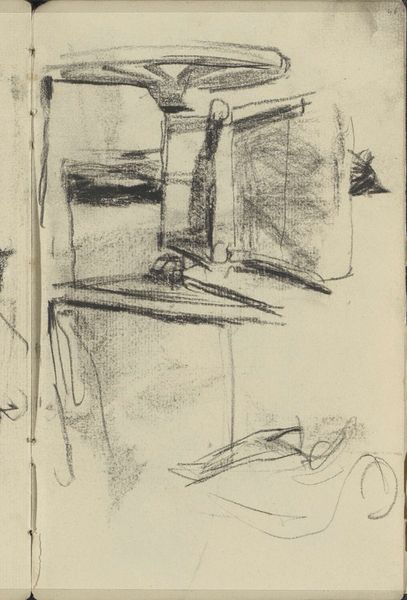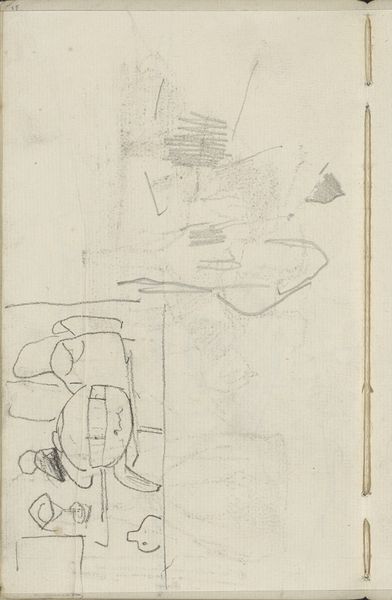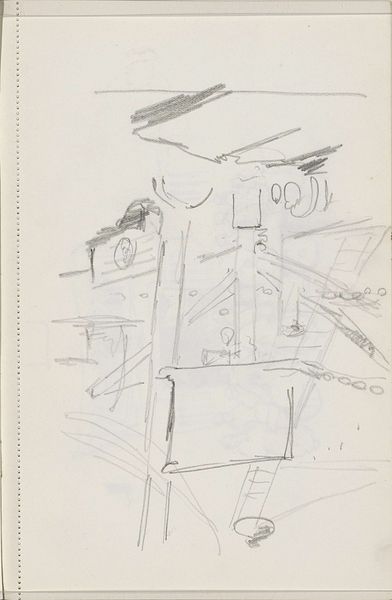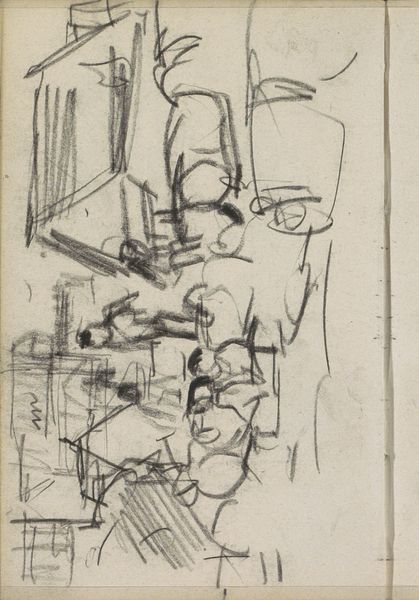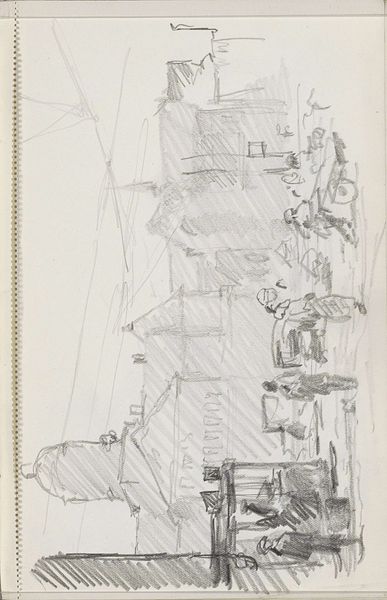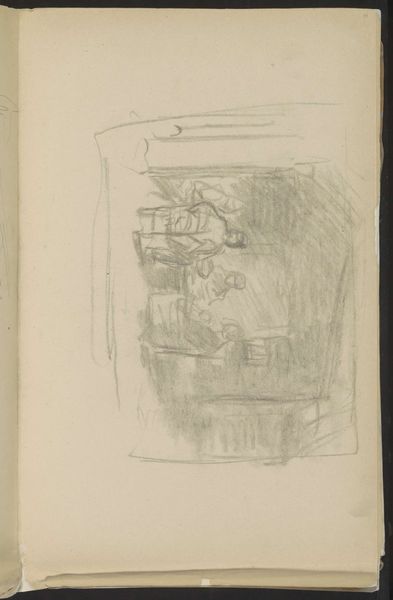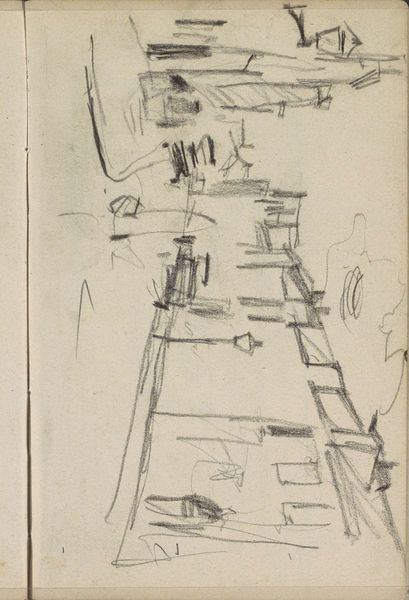
Copyright: Rijks Museum: Open Domain
Curator: This sketch, "Aangemeerd schip aan een kade" or "Moored Ship on a Quay," comes to us from Cornelis Vreedenburgh, likely executed between 1890 and 1946. We see a ship resting along a quay. It is made of graphite on paper. Editor: Stark, isn’t it? There’s an unfinished quality here, almost like the artist has captured a fleeting thought, not fully fleshed out. It feels immediate. The composition, weighted towards the top, leaves a void that asks questions. Curator: Indeed, the void functions, I believe, as a compositional tool. See how the textured graphite hatch marks delineate form and shadow? Notice the diagonal emphasis conferred to it by a structural array of lines and repeated angled shapes; there is a strong implication of stability. The choice to leave the lower portion bare pulls focus to the architecture of the ship and the surrounding structures. Editor: I'm drawn to the rough depiction of the vessel itself. For centuries, the ship has served as a vessel, both literally and symbolically. Vreedenburgh's piece alludes to journeys undertaken, whether physical voyages or metaphorical quests. What stories might this ship, now at rest, carry within its timbers? What collective maritime memory does it invoke? Curator: Well, formally, that repeated structural hatching imbues a sensation of mass and volume. I suggest that rather than symbolic journeying, it demonstrates acute mastery over form. Editor: I can't overlook the implicit narrative, the unspoken history held within that rudimentary silhouette. Perhaps the artist saw this not as a simple structure, but as a silent witness, bearing testament to eras past. Doesn’t the stark simplicity of its rendering augment the sense of untold narratives contained within it? Curator: I appreciate the personal reflection evoked. Though I still am compelled by the formal elements—the lines, forms, and composition creating a powerful visual balance. It makes me think that the most elementary marks sometimes communicate most vividly. Editor: And for me, it underscores the potency of symbols to transcend time. Thank you for focusing my consideration.
Comments
No comments
Be the first to comment and join the conversation on the ultimate creative platform.
